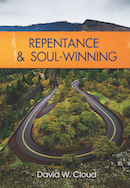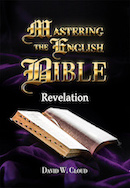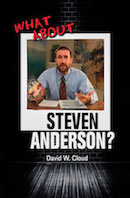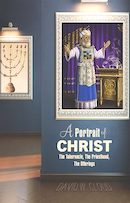866-295-4143, fbns@wayoflife.org
Speaking on the “History and Heritage of the English Bible” at Southwestern Baptist Theological Seminary on March 22-23, 2006, Charles Ryrie stated that there have been some 24,000 variations of the King James Version since its original publication in 1611, and “it’s just something you might have in the back of your mind to help somebody who thinks King James is the only thing that we should use” (“Christians Are Wasting Heritage of English Bible,” Baptist Press, April 4).
ANSWER:
I will answer this question under the following five headings:
1. There were corrections of printing errors, typographical changes, and spelling updates.
These were done by the British publishers of the KJV and can be grouped into two time periods.
There were updates made between 1613 and 1639 for the purpose of correcting printing errors. The revisers included Samuel Ward and John Bois, two of the original translators. “Some errors of the press having crept into the first edition, and others into later reprints, King Charles the First, in 1638, had another edition printed at Cambridge, which was revised by Dr. Ward and Mr. Bois, two of the original Translators who still survived, assisted by Dr. Thomas Goad, Mr. Mede, and other learned men” (Alexander McClure, The Translators Revived, 1855).
An update was made between 1762-69 to correct any lingering printing errors and to update the spelling, enlarge and standardize the italics, and increase the number of cross references and marginal notes. The revision was begun in 1762 by Dr. F.S. Paris of Cambridge University and completed in 1769 by Dr. Benjamin Blayney of Hertford College, Oxford University. “The edition in folio and quarto, revised and corrected with very great care by Benjamin Blayney, D.D., under the direction of the Vice-Chancellor of Oxford, and the Delegates of The Clarendon Press, in 1769” (McClure, The Revision Revised). The revision was made by collating the then current editions of Oxford and Cambridge with those of 1611 and 1701.
2. All of the changes were of a minor nature, such as the following:
** Printing errors were corrected. This was almost exclusively the nature of the corrections made in the 28 years following the first printing. Consider some examples:
Psalm 69:32 -- “seek good” was a printing error in the 1611 that was corrected to “seek God” in 1617
Ecclesiastes 1:5 -- “the place” was a printing error in the 1611 that was corrected to “his place” in 1638.
Matthew 6:3 -- “thy right doeth” was a printing error in the 1611 that was corrected to “thy right hand doeth” in 1613.
Consider some famous printing errors that have appeared in printings of the King James Bible:
The Wicked Bible (1631) omitted “not” in “Thou shalt not commit adultery” in Exodus 20:14.
The Printer’s Bible (1702) read “printers have persecuted me” instead of “princes” in Psalm 119:161
The Vinegar Bible (1717) read “The Parable of the Vinegar” instead of Vineyard.
The Ears to Ear Bible (1810) read “who hath ears to ear let him hear” in Mat. 14:43.
The Rebekah’s Camel’s Bible (1823) read “And Rebekah arose, and her camels [should be damsels]” in Gen. 24:61.
** The use of italics was more standardized and its use was expanded.
Spelling and punctuation were updated. For example, old English had an “e” after the verb (i.e., feare, blinde, sinne, borne). The old English also used a “long s” in places. The long s looked like an f except the horizontal line extended only to the left of the vertical. Thus the word “also” looked like “alfo” in the early editions of the King James Bible. The old English also used a “u” for the “v” (euil instead of evil). Consider how 1 Corinthians 14:9 was written in 1611: “So likewise you, except ye vtter by the tongue words easie to be vnderstood, how shall it be knowen what is spoken? For ye shall speak into the aire.” Or Genesis 1:1-2: “In the beginning God created the Heauen, and the Earth. And the earth was without forme, and voyd, and darkenesse was vpon the face of the deepe: and the Spirit of God mooued vpon the face of the waters.”
** A large number of new marginal notes and cross-references were added.
3. Donald Waite of Bible for Today compared every word of the 1611 KJV with a standard KJV in publication today (the 1917 Scofield which uses an Oxford text).
Dr. Waite’s study is entitled “KJB of 1611 Compared to the KJB of the 1917 Old Scofield” (BFT1294) and can be obtained from Bible for Today, 900 Park Ave., Collingswood, NJ 08108, http://www.biblefortoday.org/. He counted all of the changes that could be heard. The largest number of changes were spelling (e.g., “blinde” to “blind”), but as these have no real significance he did not count them. Waite says: “The purpose of my study was to show that when the New King James Version (NKJV) editors believed that ‘the King James Bible should once more be sensitively revised’ (p. 2). THE IMPLICATION IS THAT THE NKJV WAS ‘JUST ONE MORE REVISION.’ Yet the NKJV made upwards of 100,000 changes in the English words. I wished to show that the changes from the 1611 to the 1769 KJB were MINOR compared with the MAJOR numbers of changes in the NKJV. ... The 1,095 figure would be only about 0.14% changes which would be even more minor. Compared with the NKJV, if there are 100,000 changes (and there are probably many more), this would be about 12.6% changes which would show that the NKJV was a far different kind of a revision than that of the 1769 Old King James Bible which we now have. The NKJV is not “just one more ‘revision’ of the KJB. It is a new translation.”
Waite found only 1,095 changes* that affect the sound throughout the entire 791,328 words in the King James Bible. Of these, the vast majority are minor changes of form, such as “towards” changed to “toward,” “burnt” changed to “burned,” “amongst” changed to “among,” “lift up” changed to “lifted up,” and “you” changed to “ye.” Obviously these are not real changes of any translational significance. [* Waite’s original report stated that he found 421 changes that affect the sound, but he later revised that to 1,095 changes.]
Dr. Waite found ONLY 136 SUBSTANTIAL CHANGES (out of 791,328 words) between the original KJV of 1611 and the contemporary Oxford edition. Most of these changes were made within 28 years after the original publication of the KJV and were the simple correction of printer’s errors. Following are some of the 136 substantial changes:
1 Samuel 16:12 -- “requite good” changed to “requite me good”
Esther 1:8 -- “for the king” changed to “for so the king”
Isaiah 47:6 -- “the” changed to “thy”
Isaiah 49:13 -- “God” changed to “Lord”
Isaiah 57:8 “made a” changed to “made thee a”
Ezekiel 3:11 -- “the people” changed to “the children of thy people”
Naham 3:17 -- “the crowned” changed to “thy crowned”
Acts 8:32 -- “shearer” changed to “his shearer”
Acts 16:1 -- “which was a Jew” changed to “which was a Jewess”
1 Peter 2:5 -- “sacrifice” changed to “sacrifices”
Jude 25 -- “now and ever” changed to “both now and ever”
Further, there are a few differences between the Oxford and the Cambridge corrected editions that can still be found in current editions of the KJV. Following is one example:
Jeremiah 34:16 -- Cambridge has “whom YE had set at liberty” while Oxford has “whom HE had set at liberty”
4. The most thorough study ever done on the various editions of the King James Bible was by Frederick Scrivener in the late 19th century.
He was the author of the Cambridge Paragraph Bible, which was an “elaborate attempt to publish a trustworthy text of King James’ version.” It first appeared in 1873 and was republished in 1884 accompanied by Scrivener’s valuable Introduction and Appendices as The Authorized Edition of the English Bible (1611): Its Subsequent Reprints and Modern Representatives (Cambridge: University Press, 1884). One of the Appendices is a “List of original readings of the Bible of 1611 examined and arranged” and another is a “List of wrong readings of the Bible of 1611 amended in later editions.” Scrivener also analyzed the KJV’s underlying Greek text and tabulated the number of times that it varied from the Stephens and the Beza editions of the Received Text. A reprint of Scrivener’s important book is available from Bible for Today. It is also available on CD from Sola Scriptura Publishing, 1118 SW Orleans St., Topeka, KS 66604. http://www.solascripturapublishing.com, mlangley1@cox.net.
5. What is the significance of these facts?
First, we see that the KJV has gone through such a strenuous purification process that the reader can have complete confidence in its accuracy.
Also, any idea that the KJV was “given by inspiration” is disproved. If it were “given by inspiration” in 1611 it would not have needed any sort of correction or refinement, because it would have been infallible in every detail. Those who teach that the KJV is more than an accurate translation, that it is given by inspiration and perfect and inerrant in itself and advanced revelation and such must show us exactly which edition they are referring to.
- Receive these reports by email
- www.wayoflife.org
______________________
Sharing Policy: Much of our material is available for free, such as the hundreds of articles at the Way of Life web site. Other items we sell to help fund our expensive literature and foreign church planting ministries. Way of Life's content falls into two categories: sharable and non-sharable. Things that we encourage you to share include the audio sermons, O Timothy magazine, FBIS articles, and the free eVideos and free eBooks. You are welcome to make copies of these at your own expense and share them with friends and family. You may also post parts of reports and/or entire reports to websites, blogs, etc as long as you give proper credit (citation). A link to the original report is very much appreciated as the reports are frequently updated and/or expanded. Things we do not want copied and distributed are "Store" items like the Fundamental Baptist Digital Library, print editions of our books, electronic editions of the books that we sell, the videos that we sell, etc. The items have taken years to produce at enormous expense in time and money, and we use the income from sales to help fund the ministry. We trust that your Christian honesty will preserve the integrity of this policy. "For the scripture saith, Thou shalt not muzzle the ox that treadeth out the corn. And, The labourer is worthy of his reward" (1 Timothy 5:18). Questions? support@wayoflife.org
Goal:Distributed by Way of Life Literature Inc., the Fundamental Baptist Information Service is an e-mail posting for Bible-believing Christians. Established in 1974, Way of Life Literature is a fundamental Baptist preaching and publishing ministry based in Bethel Baptist Church, London, Ontario, of which Wilbert Unger is the founding Pastor. Brother Cloud lives in South Asia where he has been a church planting missionary since 1979. Our primary goal with the FBIS is to provide material to assist preachers in the edification and protection of the churches.
Offering: Offerings are welcome if you care to make one. If you have been helped and/or blessed by our material offerings can be mailed or made online with with Visa, Mastercard, Discover, or Paypal. For information see: www.wayoflife.org/about/makeanoffering.html.





